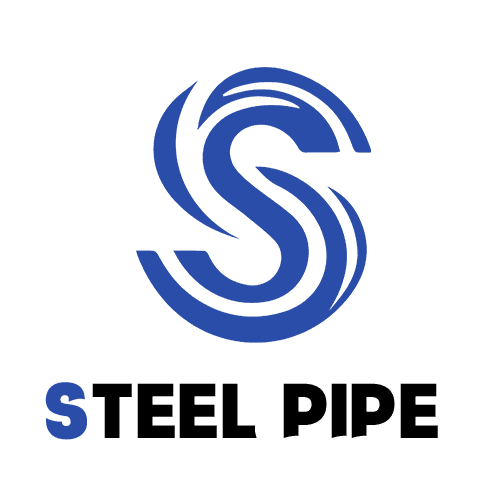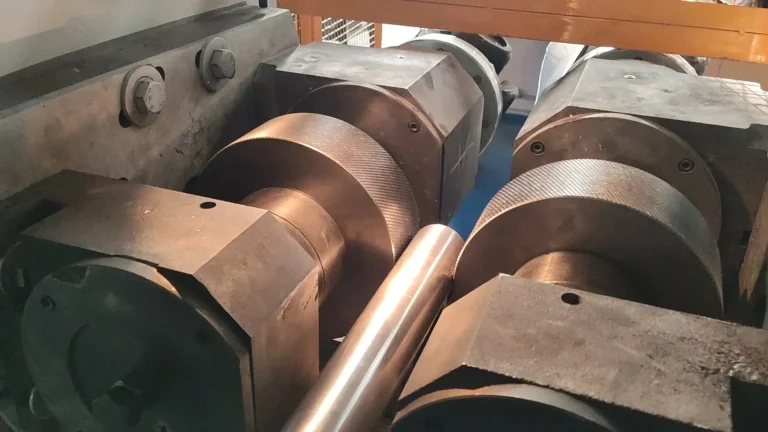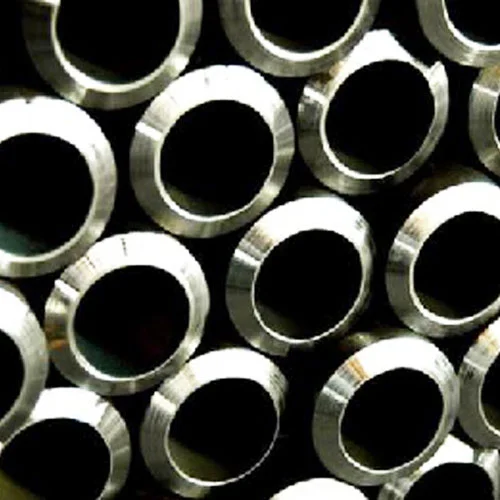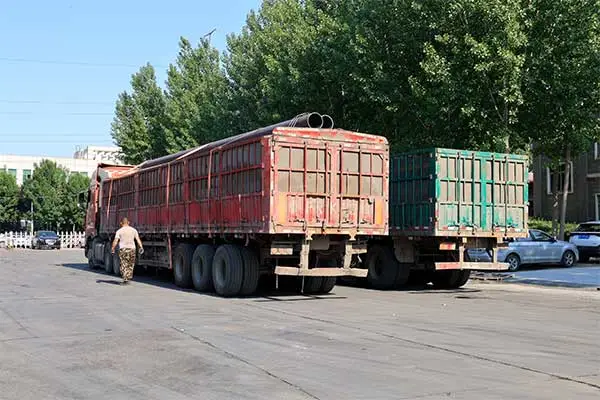Welcome to My Blog!
Before we dive into the content, I’d love for you to join me on my social media platforms where I share more insights, engage with the community, and post updates. Here’s how you can connect with me:
Facebook:https://www.facebook.com/profile.php?id=61559060896490
Now, let’s get started on our journey together. I hope you find the content here insightful, engaging, and valuable.
Introduction

What are Seamless Cold Drawn Steel Tubes?
Seamless cold drawn steel tubes are precision-engineered metal products formed from a solid steel billet without any welds or seams. This manufacturing process results in tubes with exceptional strength, durability, and precision. The term “seamless” emphasizes the absence of welds, ensuring a consistent and uniform structure throughout the tube’s length. The “cold drawn” process involves drawing the steel through a die at room temperature, which enhances the mechanical properties of the steel and results in a smooth, high-quality surface finish.
Why Choose Seamless Cold Drawn Steel Tubes?
Seamless cold drawn steel tubes offer numerous advantages that make them ideal for a wide range of applications. These advantages include:
- Superior Strength and Durability: The cold drawing process significantly improves the mechanical properties of the steel, resulting in tubes that can withstand high pressures, temperatures, and heavy loads.
- High Precision and Tolerance: Seamless cold drawn tubes are manufactured to exacting tolerances, ensuring precise dimensions and consistent wall thickness. This level of precision is essential for applications requiring tight fits and accurate alignments.
- Smooth Surface Finish: The cold drawing process produces a smooth and clean surface finish, reducing the need for additional finishing operations and minimizing the risk of corrosion.
- Versatility: Seamless cold drawn steel tubes are available in a wide variety of grades, sizes, and wall thicknesses, making them suitable for a diverse range of applications across various industries.
Manufacturing Process
The production of seamless cold drawn steel tubes involves a meticulous manufacturing process that requires advanced techniques and precise control. The key steps in this process are as follows:
- Billet Preparation: The process begins with the selection of high-quality steel billets, which are carefully inspected and prepared to ensure they meet stringent quality standards.
- Piercing: The prepared billet is heated and pierced to create a hollow tube. This piercing process is crucial in forming the initial shape of the tube.
- Reducing: The pierced tube is then subjected to multiple drawing passes, where it is drawn through a series of dies to reduce its diameter and increase its length. Each drawing pass further refines the shape and improves the mechanical properties of the tube.
- Annealing: To relieve the stresses induced during the drawing process and improve the ductility of the steel, the tube is periodically annealed. This involves heating the tube to a specific temperature and then cooling it slowly, allowing the metal grains to recrystallize and relax.
- Straightening: After annealing, the tube is straightened to ensure that it is free of any bends or warps, maintaining its dimensional accuracy.
- Finishing: The final step in the manufacturing process involves various finishing operations to achieve the desired surface finish. These operations may include polishing, honing, or other surface treatments, depending on the specific application requirements.
Applications of Seamless Cold Drawn Steel Tubes
Seamless cold drawn steel tubes are widely used in a variety of industries due to their exceptional properties and versatility. Some of the key applications of these tubes include:
- Automotive: Seamless cold drawn steel tubes are used in the automotive industry for critical components such as axles, steering columns, brake lines, and suspension systems. Their high strength, precision, and durability make them ideal for these demanding applications.
- Hydraulics and Pneumatics: In hydraulic and pneumatic systems, seamless cold drawn steel tubes are used for cylinders, pistons, and fittings. Their ability to withstand high pressures and provide accurate fluid flow makes them essential components in these systems.
- Mechanical Engineering: In the field of mechanical engineering, seamless cold drawn steel tubes are used for a wide range of applications, including shafts, spindles, bushings, and other precision components. Their high strength, accuracy, and resistance to wear make them suitable for these demanding applications.
- Aerospace: The aerospace industry relies on seamless cold drawn steel tubes for critical components in aircraft and spacecraft. Their lightweight, high-strength properties, and resistance to extreme temperatures and pressures make them ideal for these applications.
- Oil and Gas: In the oil and gas industry, seamless cold drawn steel tubes are used for drilling, production, and transportation of oil and gas. Their resistance to corrosion, high-pressure, and high-temperature environments make them essential components in these applications.
- Chemical Processing: In chemical processing plants, seamless cold drawn steel tubes are used for piping and tubing in corrosive environments. Their resistance to corrosion and high-temperature environments makes them suitable for these applications.
Grades of Steel for Seamless Cold Drawn Steel Tubes
The choice of steel grade for seamless cold drawn steel tubes depends on the specific application requirements, such as strength, corrosion resistance, and temperature resistance. Some of the common steel grades used for these tubes include:
- Carbon Steel: Carbon steel is a versatile and cost-effective option for general-purpose applications. It offers a good balance of strength, ductility, and weldability.
- Alloy Steel: Alloy steels are enhanced with specific alloying elements to improve their mechanical properties. Common alloying elements include chromium, molybdenum, nickel, and vanadium. Alloy steels offer superior strength, hardness, and toughness compared to carbon steel. They are commonly used in applications requiring high strength and durability, such as automotive components, hydraulic cylinders, and pressure vessels.
- Stainless Steel: Stainless steel is highly resistant to corrosion and oxidation, making it ideal for applications in harsh environments. It is available in various grades, each with its own specific properties. Common stainless steel grades used for seamless cold drawn tubes include 304, 316, and 430.
Tolerances and Standards
Seamless cold drawn steel tubes are manufactured to precise tolerances and standards to ensure consistent quality and performance. The tolerances for these tubes are typically specified in terms of outside diameter, wall thickness, and straightness.
Several standards govern the production and testing of seamless cold drawn steel tubes. Some of the most common standards include:
- ASTM A519: This standard covers seamless carbon steel boiler and superheater tubes.
- ASTM A269: This standard covers seamless cold-drawn low-carbon steel tubing.
- ASTM A312: This standard covers seamless and welded austenitic stainless steel tubing.
Testing and Quality Control
To ensure the quality and reliability of seamless cold drawn steel tubes, rigorous testing and quality control measures are implemented throughout the manufacturing process. Some of the common tests performed on these tubes include:
- Chemical Analysis: Chemical analysis is conducted to verify the composition of the steel and ensure it meets the specified requirements.
- Mechanical Testing: Mechanical tests, such as tensile testing, yield strength testing, and hardness testing, are performed to evaluate the mechanical properties of the steel.
- Hydrostatic Test: Hydrostatic testing is used to determine the burst pressure of the tube and assess its ability to withstand internal pressure.
- Eddy Current Testing: Eddy current testing is a non-destructive testing method used to detect surface and subsurface defects in the tube.
- Ultrasonic Testing: Ultrasonic testing is another non-destructive testing method used to detect internal defects, such as cracks and voids, in the tube.
Surface Treatments
Surface treatments can be applied to seamless cold drawn steel tubes to enhance their performance and appearance. Some common surface treatments include:
- Polishing: Polishing improves the surface finish of the tube, making it smoother and more aesthetically pleasing.
- Honing: Honing is a precision finishing process that removes material from the inner surface of the tube to achieve a specific surface finish and tolerance.
- Plating: Plating involves applying a thin layer of metal, such as chromium or nickel, to the surface of the tube to improve its corrosion resistance and appearance.
- Coating: Coating involves applying a protective coating, such as paint or powder coating, to the surface of the tube to protect it from corrosion and other environmental factors.
Benefits of Using Seamless Cold Drawn Steel Tubes
Seamless cold drawn steel tubes offer a number of benefits, including:
- High Strength and Durability: The cold drawing process significantly improves the strength and durability of the steel, making it ideal for demanding applications.
- Precision and Accuracy: Seamless cold drawn tubes are manufactured to precise tolerances, ensuring accurate dimensions and consistent performance.
- Smooth Surface Finish: The cold drawing process produces a smooth and clean surface finish, reducing the need for additional finishing operations and minimizing the risk of corrosion.
- Versatility: Seamless cold drawn steel tubes are available in a wide variety of grades, sizes, and wall thicknesses, making them suitable for a diverse range of applications.
- Cost-Effective: While the initial cost of seamless cold drawn steel tubes may be higher than welded tubes, their superior performance and longer lifespan can often lead to lower long-term costs.
How to Select the Right Seamless Cold Drawn Steel Tube
When selecting the right seamless cold drawn steel tube for a specific application, several factors need to be considered:
- Grade of Steel: The grade of steel should be selected based on the required strength, corrosion resistance, and temperature resistance.
- Size and Wall Thickness: The size and wall thickness of the tube should be chosen to meet the specific load and pressure requirements of the application.
- Tolerances: The tolerances for the tube should be specified to ensure that it meets the required dimensional accuracy.
Cost Considerations
The cost of seamless cold drawn steel tubes is influenced by several factors, including:
- Grade of Steel: Higher-grade steels, such as alloy steels and stainless steels, are generally more expensive than carbon steel.
- Size and Wall Thickness: Larger diameter and thicker wall tubes tend to be more expensive.
- Quantity: Larger quantities may result in lower unit costs due to economies of scale.
- Surface Finish: Additional surface treatments, such as polishing or plating, can increase the cost of the tubes.
Future Trends

The future of seamless cold drawn steel tubes is promising, with several trends shaping the industry:
- Advanced Manufacturing Techniques: The adoption of advanced manufacturing techniques, such as precision forging and advanced heat treatment processes, can further improve the quality and performance of seamless cold drawn steel tubes.
- New Materials: The development of new materials, such as high-strength low-alloy steels and advanced high-strength steels, can expand the range of applications for seamless cold drawn steel tubes.
- Sustainable Manufacturing: The increasing focus on sustainability will drive the development of more environmentally friendly manufacturing processes for seamless cold drawn steel tubes, reducing energy consumption and minimizing waste.
Conclusion
Seamless cold drawn steel tubes are essential components in a wide range of industries due to their superior strength, precision, and durability. By understanding the manufacturing process, available grades, and applications, engineers and designers can select the optimal tube for their specific needs. As technology continues to advance, we can expect to see further innovations in the production and application of seamless cold drawn steel tubes.
FAQ
What is the difference between seamless and welded steel tubes?
Seamless steel tubes are formed from a solid billet without any welds, resulting in a continuous and uniform structure. Welded steel tubes, on the other hand, are made by joining two or more pieces of steel together using a welding process.
How is the diameter of a seamless cold drawn tube measured?
The diameter of a seamless cold drawn tube is typically measured using a caliper or micrometer.
What are the common surface finishes for seamless cold drawn steel tubes?
Common surface finishes for seamless cold drawn steel tubes include polished, honed, pickled, and black oxide.
Can seamless cold drawn steel tubes be bent or formed?
Yes, seamless cold drawn steel tubes can be bent or formed, but the degree of bending or forming depends on the grade of steel and the tube’s dimensions.
How do I choose the right grade of steel for my application?
The choice of steel grade depends on the specific requirements of the application, such as strength, corrosion resistance, and temperature resistance. 1 It is recommended to consult with a materials engineer or supplier to select the appropriate grade of steel.




